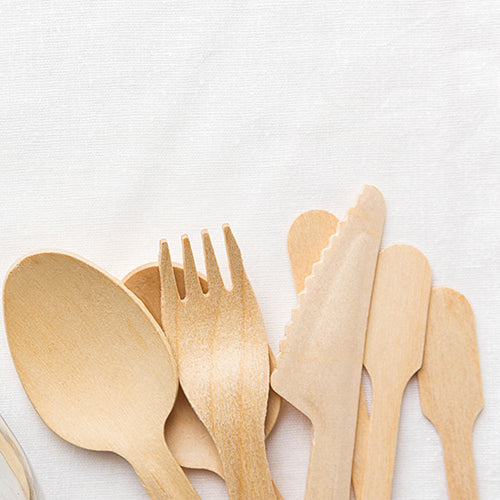Each year, as much as 50% of food produced heads to landfill – this rotting food then contributes to methane emissions, a gas that is 84 times more harmful to the environment than carbon dioxide.
We’re throwing away valuable scraps and garden waste that could be used to reduce your impact. Composting is pretty easy to do, and part of the solution to reducing these harmful emissions starts right at home – so let’s get started. The goal? Turn your garden and kitchen waste into nutrients for Mother Earth.
What is compost and why even bother?
Composting: soil microorganisms breaking down organic, compostable material into their components like oxygen and nitrogen. Or a simple less glamorous definition, old food slowly rotting in a heap that creates earthen gold.
Commonly used composting ingredients are things like kitchen food scraps, plant materials, lawn clippings, leaves, wood chips, and straw. Those helpful little microbes will eat away at the waste, producing a lovely nutrient-filled pile of rotten goodness – it's a natural process. Notice how we mentioned ‘compostable’ materials above? That’s because the entirely different and slightly more misleading term ‘biodegradable’ is often thrown around in the sustainability world –, it’s not the best - especially when literally everything is biodegradable. Your car or bike is technically biodegradable...
Composting is amazing for a variety of reasons including; reducing kitchen and garden waste, enriching the topsoil and lowering the toxic gasses released from landfill - all of which give mother nature a helping hand.
So, how do you compost?
It can be pretty easy to do and you don’t have to rush out and spend loads of money on buying equipment. You simply pile organic scraps up in a bin, raised garden space or other designated area in the garden and let it all break down.
There are a few different ways to compost depending on how much work you want to put in (or not put in, hey worm friends!). The two common ways you’ll most often see include:
- Anaerobic – without air (a big lump that takes longer to decompose and can be a little stinky but doesn’t require much work at all).
- Aerobic – with air (turning the heap with a garden fork, or spinning drum which speeds everything up by getting new waste into the hot centre, and letting the air circulate nicely).
You may have also heard about Bokashi (fermentation) and Vermicomposting (worm farms), which are both great ways to contribute if you’re living in a smaller space like an apartment. Check out our for more juicy details and to work out which method might work best for your lifestyle.
Getting started on your composting journey doesn’t need to be expensive - keep an eye out for second-hand worm farms and composting bins on local community Facebook pages and buy/sell groups. Otherwise, check-in with your local hardware or gardening store for options. A sturdy garden fork and some enthusiasm might be all investment you need!
What to put in, and what to leave out
The richest kind of compost heap will have a decent mixture of organic goodness through it: wet, dry and light, and woody stuff, all layered in small pieces like a big earthy lasagne! Add your ripped up Ethique packaging, animal poop, tea leaves, coffee grounds, kitchen food scraps, shredded newspaper and garden trimmings in for a nice mulch-y mix.
If you’re not in a hurry, just chuck everything in as is – mother nature will do the work for you. If you’d like to use your compost sooner rather than later, you can help speed up the decomposition process by crushing eggshells, chop up veggie peels into small bits, and rip compostable cardboard and paper into tiny pieces. Leave out animal poop that has come from meat-eaters e.g., dogs and cats. This type of dung can introduce unwanted bacteria which you don’t want in your garden veggies later on. Citrus, garlic and onions aren’t worm-friendly, but will be fine for them after being broken down in a compost heap.
Our product packaging (even the stickers) are free from acid, chlorine, laminates and plastic, which means it can all be turned into healthy compost. If you’re ever unsure about whether the packaging is compostable, check for a home-compostable label. If it’s still unclear, it’s probably safest to recycle it but this should be a last resort - you never know where hidden plastics lay waiting.
Won’t it be stinky?
A common myth is that all compost stinks and attracts the neighborhood pests when in fact a healthy, thriving compost heap should just smell earthy and rich. Turning it regularly with a garden fork will help keep it aerated with less smell overall. Another pro tip is reducing your food waste in general by practicing, good storage habits and using up as much as you can before it even makes its way to the compost bin. Turn those veggie scraps into a warming, delicious stock if you can!
Get rotting!
When it comes to composting, it's a big ol' non-negotiable for us and everything we make can all break down, delivering nutrients back into the topsoil. If done correctly, composting won’t smell, doesn’t encourage pests and will provide your garden (or plant babies) with lots of deliciousness. A bonus is that you’ll also be reducing greenhouse gasses, overflowing landfills and smelly rubbish bins!
A small commitment by all to help combat food and garden waste means a big reduction in landfill garbage, so let’s give the soil something back.
Happy composting everyone! 💚
Sources:

 Impact
Impact Blog
Blog Store Locator
Store Locator


